Super Robot Taisen: Original Generation (Game Boy Advance) Review
By Matthew Evans  21.01.2007
21.01.2007

As with all things, anything is good as long as it is in moderation. Sadly the games Industry has yet to learn that little gem. I love the fantasy setting, I really do. I sat through all three extended Lord of the Rings movies, enjoyed Eragon and I've read the works of Raymond E. Feist, William King and the team of Margaret Weiss and Tracy Hickman, but I am starting too get a little fed up. Every time I check for RPGs or strategy titles, the vast majority of them have something to do with swords and sorcery. I am getting sick of constantly watching an Elf whacking an Orc over the head with his staff. So, it is with a sigh of relief that I found Super Robot Taisen: Original Generation.
Super Robot Taisen: Original Generation is a turn-based strategy in the same vein as Fire Emblem and Final Fantasy Tactics Advance. But to think of it as Sacred Stones in space, with wizards and wolves replaced by masses of large mechanised infantry just does not do the game justice. The robotic nature is more than just window dressing and affects the whole game design.
In Japan franchised robots such as the Gundams appear in the SRT series of games, but due to licensing arrangements it is unlikely we will ever see those games outside of their home nation. So Banpresto use original IP created by Bandai for this game's cast, hence the title Original Generation. Anybody who is familiar with Japanese Mecha stories will know what to expect from this game. For those that aren't, the plot is quite involved, unlike other games where you'll follow a story and there'll be a big plot twist. SRT drops this in favour of an evolving storyline; the plot doesn't so much use one huge incident to change the narrative, it will use numerous smaller plot devices, which add to and build upon the story. This style of storytelling creates a more complex and deeper world where character and political relationships are given more room to breathe and come alive, as opposed to the stale and flat worlds you get from games using the more contrived methods.
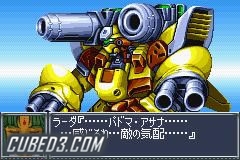
The game further emphasises this by giving you the option of protagonists, Ruysei from the East Brigade's (Japan) SRX team or Kyosuke from America's ATX team. Both fight for the same cause against the same enemies, but their separate paths give greater insight into the conflict and, of course, a good reason to play through the game again after you've completed it. The main sticking point is that the story can be too involved. It throws acronyms at you left, right and centre, and, for example, the SRX team use EOT-enabled mechs, which were created by EOTI - a research team dispatched by the EFG, who along with the EFA were warned by the EOTI of an alien invasion. Along the way, the SRX will come across the ATX, the UCC and the DC, and with those acronyms in mind you've got to keep track of where members from the supporting cast came from and are frequently changing affiliation to as well. Once you've got to grips with the story, it opens up to become a work of art. If you haven't kept track by chapter ten, though, then it all basically becomes complete gibberish!
The gameplay is equally involved, with options everywhere. It is not like in Fire Emblem where you pick an archer and decide on what bow you want. Instead you have to assign a pilot to a robotic suit, as well as assigning weapons and parts. Everything has its own strengths and weaknesses; super robots are built like brick houses while real robots are more agile. So to get the best out of your mechs you are going to want to link up pilots with good agility to real robots and those with good defence to super robots. Pilots, mechs and weapons also vary in what terrain they work best in. You could put a gunfighter in super robot with a powerful beam cannon, but if you fire that into water you'll be lucky to do anything more than minimum damage. As the game progresses you'll be able to get upgrades but, of course, in this game nothing is simple. Experience points will increase a pilots level, which gives standard stat increases and opens up new skills at specific levels. Actually defeating an enemy unit, though, gives that character pilot points, which can be spent on new abilities to improve performance, extra stat increases and upgrading specific terrain performance.
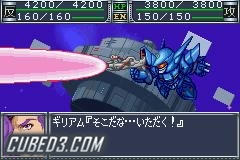
It doesn't end there either, because as you defeat units you get money and the occasional item drop. Money can be used to increase the level of a mech in one of four fields; health, energy, agility and armour, and each mech can have up to four part slots that you can put in parts you find during the game. These can increase terrain performance, boost stats or add completely new abilities. To top it off, you can even pay to have a weapons-based damage increase. Super Robot Taisen loves to let you play the game your way and there are so many options during the actual combat that it would take up too much room to talk about them in depth. Thankfully the game does a good job of selecting the best options for you during play so that you are never completely confused. But it also doesn't go down the other route and do too good a job, practically playing the game for you. The various options throughout the game bring a level of depth to the strategy that has been lacking from many games of its ilk. The gameplay is open, allowing you to come up with a game plan that suits your style and not how the game wants you to play. Special mention has to be given to the games difficulty, which has a fresh feel to it and brings something new to the table. You don't select how difficult the game is when you start the story, rather the game bases the difficulty level on how hard or easy you've made the game for yourself. In addition to the pleasingly varied missions there are also Battle Masteries - these are extra requirements bolted onto the main missions; to complete the mission you might need to defeat an enemy character, but to get the Battle Mastery you might also need to reduce a specified enemy character's health to below 10% without destroying it while still completing the main mission. The higher your Battle Mastery-to-mission passed ratio is the higher your difficulty level, which in turn says whether you unlock some of the hidden content or not.
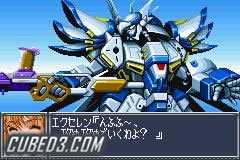
Super Robot Taisen does suffer from a drawback that is far too common in strategy titles, namely a very poor map presentation. The map graphics are simplistic and lack personality; the unit icons do a decent job of differentiating between models but if two characters are in suits of the same model you can't tell which is which unless you go through some menus to bring up their identity. As the game progresses this become less of an issue as you'll be acquiring more unique models, but it's still an issue. Thankfully the graphics go up a notch or two when it comes to the actual battle sequences. Even in their cute, super-deformed style the mechs are full of character and look every bit as powerful as you'd expect a thirty-foot robotic suit to be. The models are brilliantly drawn with a fantastic level of detail, the backgrounds are a little bare but there is enough there to give that sense of speed when each unit launches into its attack. While special attacks have special animations to make them look even deadlier, all actions are accompanied by a picture of the pilot and a text box with dialogue that relates to that action. All of this goes to remove the static and uninteresting attack sequences that have plagued other titles. With this game's graphical prowess and a good range of rousing background music, this is perhaps the best-presented strategy game I have ever played.
It is not all sunshine and happy days, however, as there are a few niggling problems, the major one being its accessibility. This is not an easy game to get into, with the plot being made up of various smaller plots that you have to keep track of and there is no tutorial to speak of whatsoever. Yes the earlier missions are stacked in your favour, but the game itself doesn't help you get acclimatised. Everything you need to know has to be gained from the manual, as it isn't anywhere else within the game. If you can get passed that there is a lot of enjoyment to be gained from this game, with two distinct storylines, a taxing Battle Mastery system, hidden extras for you to unlock, as well as genuinely different and enjoyable missions, meaning you can easily get well over eighty hours of gameplay in total. It is not for the faint hearted, but if you are bored of controlling armies that you are sure made an appearance at Helm's Deep, fancy something with an ounce more depth or just want to play with big robots, it is your duty to give this game a purchase.
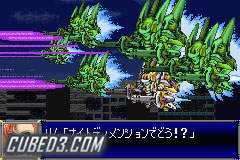
Cubed3 Rating
Exceptional - Gold Award

This is a true gamer's game, it doesn't treat you like a child that needs a twenty-mission-long tutorial or dumb the gameplay down to the point where it makes Monopoly the more strategic option. This is a great title that you owe to yourself to own. Forget the score and just go buy it now!
Comments
Comments are currently disabled

 Sign In
Sign In Game Details
Game Details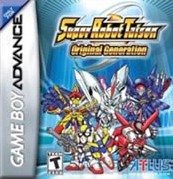
 None
None  Out now
Out now  Out now
Out now  None
None  Subscribe to this topic
Subscribe to this topic Features
Features





 Top
Top

